A Look Back with Pride, a Look Forward with Excitement: 7 Lessons Learned from Being a MACER
The past seven months I spent as a MACE student at Kingston University were no picnic for me! Going back to university to complete a second postgraduate degree as a mature student while working as an overseas Social Media Strategy Consultant, was often nerve-wracking. I believe it was just before Christmas break that I realized that I am in over my head. Yet again, I have always enjoyed a good challenge and what better than embarking on a challenge that allows me to better my skills and acquire new knowledge.
However, in order not to run the risk of sounding cliché I am going to be very honest about what happened: In the interest of continuing my academic year successfully without compromising my job (and of course, retaining my sanity in the process) I have come to the conclusion that priorities had to be determined and sacrifices needed to be made. And so, I have made the decision to dedicate my efforts to the one course that excited me (and at times, terrified me), challenged me, brought the very best in me—skills and talents I never knew existed— and most importantly helped me crystallize my future career goals; the one course that made my grueling journey at Kingston University all worthwhile: “Designing a Business” (DYB).
1. Self-reflection as a structure for professional growth
Despite the highly practical aspect of our course, our journey in DYB has nevertheless been a journey of self-awareness and self-development: “know thyself, improve thyself, and complement thyself” (Tjan, 2012). Not only, did DYB allow me to learn new skills and unearth hidden talents, but most importantly it taught me to be aware of missing skills and areas that needed further development. Throughout my journey with Le Petit Sac, I have come to realize that while real-life experiences are a great way to learn, yet by themselves, such experiences cannot provide me with proper insights on what to improve in myself. It is only when I take a step back to reflect on the value of these experiences, and what I could have done differently, that the actual learning process takes place. You see, it is self-awareness, which “involves active, persistent, and careful consideration and contemplation” of one’s knowledge (Sass, 2012), that ultimately leads to one’s professional growth and contributes to the building of a successful business (Tjan, 2012). Without self-awareness you are ignorant of both your strengths and weaknesses, your “superpowers” and your “kryptonite” (Tjan, 2012).
2. Design thinking as a trigger for Innovation
In a highly cluttered world where only innovation can provide a source of differentiation and a competitive edge to a new business (Brown, 2011), we were asked in DYB to use design thinking techniques to contribute new ideas by creating a new product or service that solves an existing problem differently (Beaumont, 2011), and so we did. I have always been so fond of wearing my high-heeled shoes. However, due to the hectic lifestyle we lead in London, the long walking distances, and use of public transportation wearing high-heels soon became a source of torture for me. I recall, during the first few months of arriving here, getting dressed up was a major headache, and always ended up with me substituting my high- heels with flats just minutes before heading out. Additionally, I must admit that seeing women walk barefoot in streets and tube stations on a late Friday or Saturday night has been a shocking cultural experience for me.
I recall sitting on the train from Kingston University to Waterloo station one day starring at a woman passenger while she searched restlessly for her ticket in her huge Marry Poppins bag that carried her heels, diet coke bottle, what seemed to be the rest of a tuna sandwich, keys, wallet, papers, hair clips among other interesting things. In the midst of her crisis , the blond woman was being teased by her (male) colleague for carrying a pair of heels in her bag, and for that she answered that she had a meeting that day and needed to look serious and confident. That everyday banal encounter marked me and made me aware of the important role, the right pair of shoes can play in a woman’s life.
And so, after noticing a problem, researching its causes, examining how current solutions in the market are solving, or failing to solve the problem adequately, contemplating solutions, getting involved in a long phase of prototyping and experiments, talking to industry experts, gathering feedback from clients, and finally, iterating on product design that the current Le Petit Sac was born. By framing a woman’s end journey on a night out and attempting to solve her problem by close and empathetic observation, design thinking enabled us to generate a holistic and innovative product that aims to make the beautiful functional and help women maintain their style and elegance while being comfortable.
3. Learn by Making
We usually learn to do things while thinking about them and doing them at the same time. For example, we learn to drive, not by reading manuals or textbooks, or attending lectures about driving, but by actually sitting behind the wheel and practicing our driving. Contrary to recent popular belief that all educational systems are created in such a way to hinder or kill creativity (Robinson, 2012), learning by doing—which is the process of achieving productivity through practice, self-amelioration small innovations (Dougherty, 2014)—has been the distillation of the learning philosophy of DYB at Kingston University. Throughout the course we were invited to become active rather than passive “consumer(s) of education” (Dougherty, 2014). We were makers, creators constructing a new kind of education and learning system that promotes creativity and critical thinking.
4. Build a Lean Startup
As explained in an earlier blog entry, Eric Ries’s lean startup philosophy was applied for developing Le Petit Sac as a business (Maamari, 2014). Since we are introducing a new concept to the market, we adopted Eric Ries’s MVP (minimum viable product) strategy during our product development phase (Ries, 2011). Significantly, we created a series of only 6 Le Petit Sac clutches that were not fully refined, yet had all the core features that allow them to fulfill their purpose, along with an advert video hosted on our website that tells our visitors the story of why Le Petit Sac was created and how to wear it. By doing so, we were able to gather significant feedback from customers and early adopters about our product with the least effort possible (Maamari, 2014). Additionally, due to the high-end positioning of our product, we underwent a long and grueling prototyping phase that exceeded over a 3-month period. While we were able to finally generate a good quality product, we did however miss out on sales opportunities. However, our aim at that stage was to see the reception of Le Petit Sac when launched to the market. Hence, using the Lean Startup approach was perfect for us because it allowed us to test our vision continuously (Ries, 2011).
5. Know Thy Market
Perhaps an obvious lesson that many acknowledge, yet fail to abide by when launching a new product or developing their business is finding out who their target audience is and then, catering their product or service and communication messages accordingly to drive sales. Often startups get caught up with their own product or service and tend to forget everything else, focusing their efforts on a “a one-size-fits-all marketing and sales approach” (Evans, 2013). I can still hear Dr. Beaumont’s words resonating in my ears when she stood in the middle of class back in October and warned us: “if your target audience is everyone then you have dig deeper to prioritize and rank them. Otherwise, your target audience is no one” (Beaumont, 2013). By following the Lean Tribe Canvas model, a customer-centered framework that maps out the different elements we should consider when launching a new product, Le Petit Sac was able to move from ideation phase to development and finally to implementation successfully (Beaumont, 2013).
6. Be Different
In a world saturated with “me-too” products and services competing for the attention of customers (Neumeier, 2007), my experience with Le Petit Sac, as part of the DYB course, has taught me that it’s ok necessary for any successful business to “be” different, to “think different” (Apple Inc., 1997), and to “zag” when everyone else zigs (Neumeier, 2007). However, the product or service only needs to be different enough to appeal to the customer, have a tangible impact and stand out from the clutter available in the market, “but not so much as to alienate existing customers” (Ideo.com, 2014).
7. Step out of your comfort zone
I can still remember how nervous and excited I was as we were briefly introduced to the different courses we will be undertaking during our first day of MACE orientation week. It all intensified when I started hearing the deafening words: “In Designing a Business… create a new product or a service… by mid-October you should have selected your teams … your first prototype must be ready by end of December… by January you will need to be done with manufacturing your product and move on to sales”. I could not help but think to myself: How will we ever develop the needed skills to build products from scratch? Me? the English Literature student? The Social Media specialist sitting behind her screen, analyzing and consulting? Me.. Build a product?
Even if I (miraculously ) managed to make it , will I ever be be able to pull through and create something worthy and valuable? Well allow me to admit that after being the recipient of a £250 prize for Best Business Idea from Bright Ideas 2014 competition, winning the Best Young Enterprise Company award for 2014 at Kingston University, as well as, Kingston University’s entrepreneurship award and a £3,000 in seed money for Le Petit Sac, I now look back at that day now and laugh at my naivety. You see, little did I know, back then that I was already on my way to transformation and that with design (thinking ) you should really “never stop thinking that you can’t renew yourself, do it differently, see another way through and not be frightened by doing things you don’t know” (Wolff, 2010). In a way what the DYB course has taught me is that in an increasingly competitive, fast-paced world, it is only those who are willing to constantly work on improving themselves, updating their skills, taking risks, stepping out of their comfort zone and diving into uncertainty who will eventually reap the biggest rewards (Warrell, 2013).
Looking Forward
During my academic year at Kingston University, I have juggled many hats at Le Petit Sac; from managing the team, devising strategies and overseeing development, to the conceptualization of the business idea, designing the product, the brand identity as well as creating and managing the current Le Petit Sac website.In a recent article for My Kingston, I said that Le Petit Sac “has slowly turned into a real business” (My Kingston, 2014), and that’s true for me. I am extremely passionate and determined to pursue my managing and creative work with Le Petit Sac once the DYB course is over. My journey has enabled me to acquire key entrepreneurial skills that would otherwise be wasted if not put to use in the real world. Hence, I have dedicated my dissertation project to devise a feasibility study that can help me realize Le Petit Sac’s full potential, and make it grow it into a national, and hopefully, a global brand in the future. After few years of trying to climb my way up the corporate ladder by working long days and nights for someone else without experiencing any sort of personal fulfilment, starting my own business feels like a natural step for me. My journey in DYB course has made me fully aware of the risks and the challenges that lay ahead of me as a female entrepreneur in the UK, yet it has also introduced me to a wide and influential network of business mentors, and equipped me with the right level of confidence, knowledge, and tools needed so I can survive the tide and launch my career successfully.
With our academic year coming to an end, I have recently finished off setting my milestones for the upcoming phase between refining the design and quality of Le Petit Sac, securing a patent to generate interest from high-end retail stores, reworking the production flow and securing contracts with local manufacturers and suppliers, changing our current business model and shifting to e-commerce, as well as achieving brand recognition— the upcoming year is looking both very challenging and promising to me. As far as blogging is concerned, I have not yet decided whether or not I will continue to use this platform for my future blog posts. However, I promise you this: I will continue to blog. So stay tuned to find out how my journey goes!




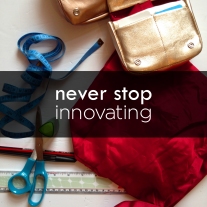
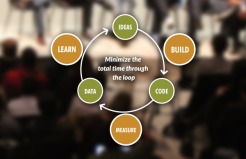
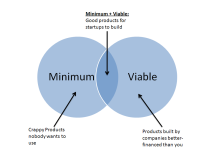

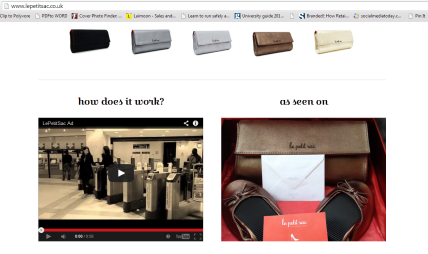
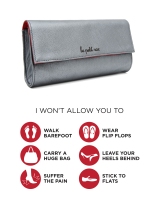
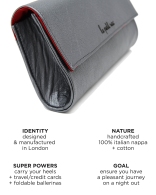
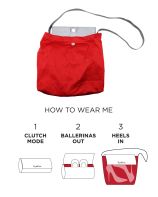

Recent Comments